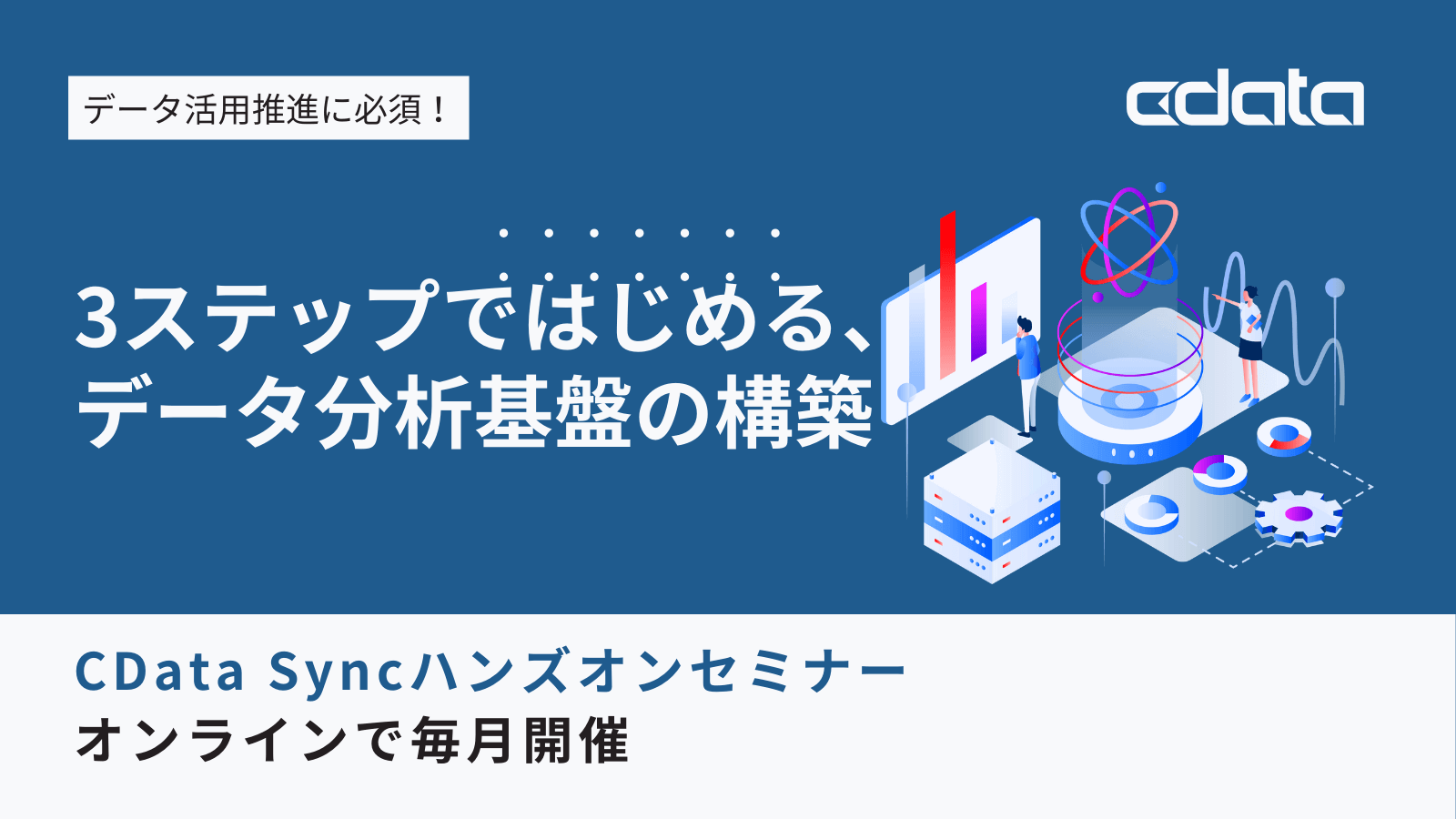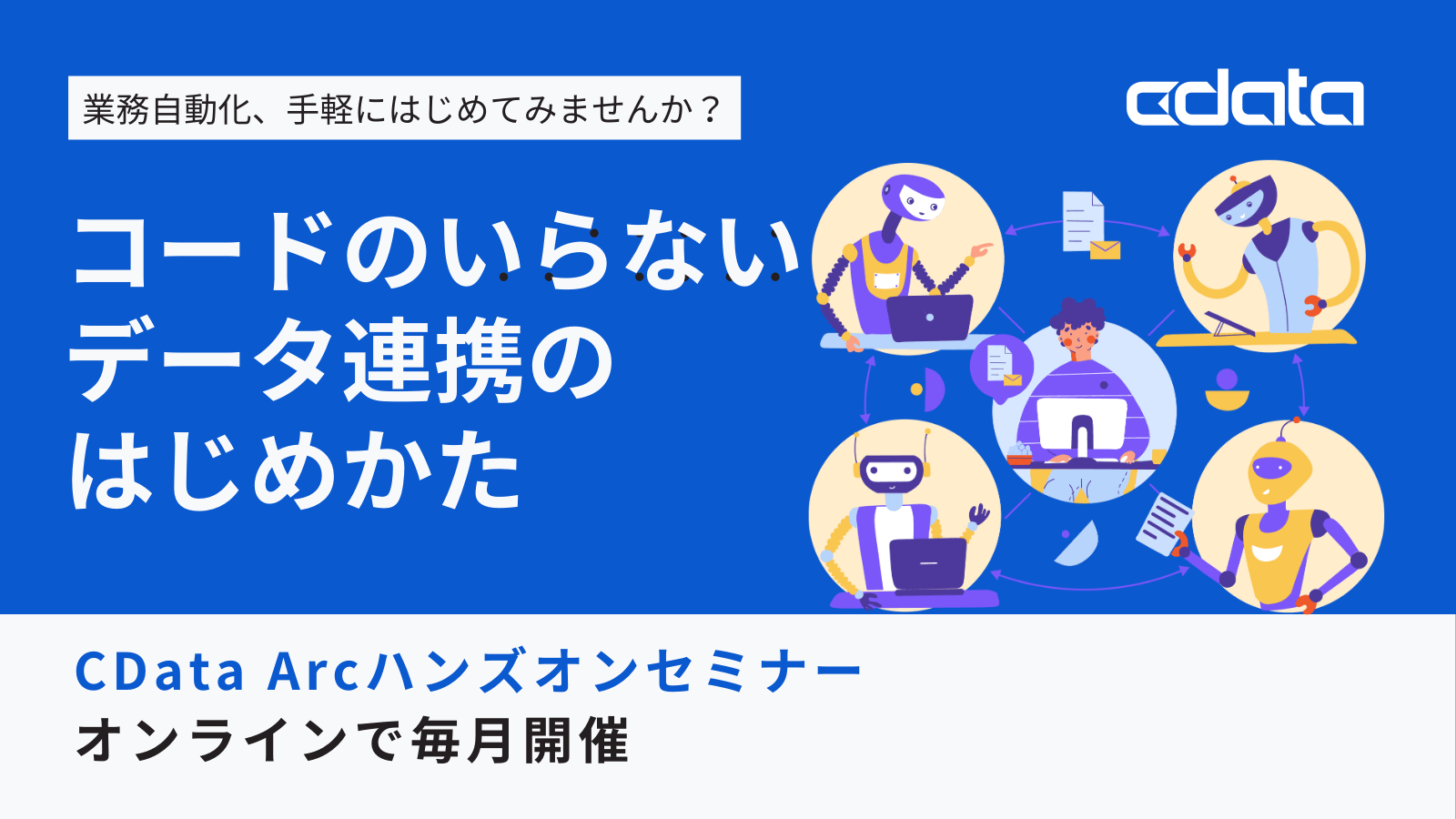ノーコードでクラウド上のデータとの連携を実現。
詳細はこちら →CData Software Japan - ナレッジベース
Latest Articles
- MySQL のデータをノーコードでREST API として公開する方法:CData API Server
- CData Sync AMI をAmazon Web Services(AWS)で起動
- Connect Cloud Guide: Derived Views, Saved Queries, and Custom Reports
- Connect Cloud Guide: SSO (Single Sign-On) and User-Defined Credentials
- Connect Cloud クイックスタート
- Shopify APIのバージョンアップに伴う弊社製品の対応について
Latest KB Entries
- DBAmp: Serial Number Expiration Date Shows 1999 or Expired
- CData Drivers のライセンスについて
- Spring4Shell に関する概要
- Update Required: HubSpot Connectivity
- CData Sync で差分更新を設定
- Apache Log4j2 Overview
ODBC Drivers
- [ article ] SAP Netweaver Gateway ODBC データソースとの間にInformatica ...
- [ article ] Amazon Athena データをBoard に連携してビジュアライズを作成
- [ article ] Microsoft Power BI Designer でCData Software ODBC ...
- [ article ] Cognos BI でSalesforce Marketing ...
JDBC Drivers
- [ article ] Tableau からActiveCampaign にJDBC Driver で連携してビジュアライズ
- [ article ] エンタープライズサーチのNeuron にYouTube Analytics ...
- [ article ] GraphQL データをSisense でビジュアライズ
- [ article ] Teradata データをYellowfin に連携してビジュアライズ
SSIS Components
- [ article ] SSIS を使ってSugar CRM データをSQL Server にインポート
- [ article ] Parquet をSSIS 経由でSQL サーバーにバックアップする
- [ article ] SSIS を使ってSharePoint Excel Services データをSQL Server ...
- [ article ] SSIS を使ってTSheets データをSQL Server にインポート
ADO.NET Providers
- [ article ] 生産スケジューラFLEXSCHE へSQL Analysis Services からデータを取り込む
- [ article ] SSRS レポートサーバーにADO.NET Provider を配置してMoney Forward ...
- [ article ] SSRS レポートサーバーにADO.NET Provider を配置してAirtable 連携
- [ article ] 生産スケジューラFLEXSCHE へCosmos DB からデータを取り込む
Excel Add-Ins
- [ article ] Excel を使ってOracle HCM Cloud にデータを追加したり、Oracle HCM ...
- [ article ] StiLL からCData Software ODBC Driver を使ってZuora ...
- [ article ] Informatica Enterprise Data Catalog にSharePoint ...
- [ article ] SharePoint Excel Services からCData ODBC Driver for ...
API Server
- [ article ] JDBI からOData Services のデータアクセスオブジェクトを作成
- [ article ] Delphi のOData データへのデータバインドコントロール
- [ article ] MySQL Workbench でOData データをクエリ
- [ article ] OData データをR で分析
Data Sync
- [ article ] MongoDB へのMarkLogic データのETL/ELT ...
- [ article ] SAP HANA へのSAP Fieldglass データのETL/ELT ...
- [ article ] MongoDB へのWooCommerce データのETL/ELT ...
- [ article ] Oracle データベースへのSharePoint Excel Services ...
Windows PowerShell
- [ article ] PowerShell からActiveCampaign ...
- [ article ] Sugar CRM データをPowerShell でMySQL にレプリケーションする方法
- [ article ] PowerShell を使ってOracle データをSQL Server にレプリケーション
- [ article ] PowerShell からHighrise データに接続してデータの更新・挿入・削除を実行する方法
FireDAC Components
- [ article ] Delphi のSage Cloud Accounting データへのデータバインドコントロール
- [ article ] Delphi のBusiness b-ridge データへのデータバインドコントロール
- [ article ] Delphi のOracle データへのデータバインドコントロール
- [ article ] Delphi のSAP Business One データへのデータバインドコントロール





